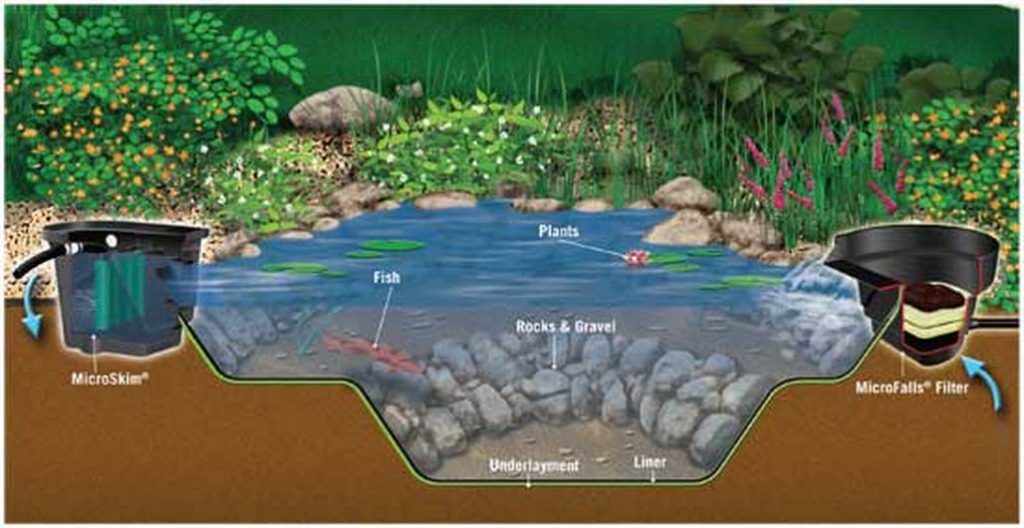When you think of a pond, you might picture a serene body of water, teeming with life and surrounded by lush greenery. But have you ever wondered how deep a pond really is? Ponds, like many natural water bodies, vary in size and depth, and their depths can have a significant impact on the ecosystems they support.
Understanding Pond Depths
Ponds can range in depth from just a few feet to several meters, depending on a variety of factors such as their size, location, and how they were formed. Some ponds are shallow enough to stand in, while others are deep enough to support a wide array of aquatic life.
The depth of a pond is a crucial factor in determining the types of plants and animals that can thrive within it. Shallow ponds may be home to a diverse range of water plants and insects, while deeper ponds can support larger fish and other aquatic organisms.
Factors Influencing Pond Depth
Several factors can influence the depth of a pond, including its geological origins, human intervention, and environmental conditions. Let’s explore some of the key factors that contribute to the depth of ponds.
Geological Origins
The geological history of a region can play a significant role in determining the depth of a pond. Ponds that form in areas with underlying bedrock or clay may be deeper and more stable, while those in sandy or gravelly areas may be shallower and more prone to fluctuations in depth.
Human Intervention
Human activities, such as excavation for agriculture or construction, can also influence the depth of ponds. In some cases, humans may intentionally deepen ponds to create habitats for fish or enhance water storage capacity. Conversely, the construction of dams or drainage systems can alter the natural depth of ponds, impacting their ecological balance.
Environmental Conditions
Environmental factors such as rainfall, temperature, and evaporation rates can also affect pond depth. Ponds in regions with heavy rainfall and minimal evaporation may be deeper and more stable, while those in arid climates may experience more significant fluctuations in depth.
The Importance of Pond Depth
The depth of a pond is crucial to its overall ecological health and the diversity of life it can support. Deeper ponds provide refuge for larger fish and other aquatic organisms, while shallow ponds are essential breeding grounds for amphibians and invertebrates. Understanding the importance of pond depth is essential for conservation efforts and the preservation of natural habitats.
Ecological Balance
The depth of a pond directly influences the distribution of plants and animals within it. Deeper ponds can support a wider range of species, including fish, turtles, and aquatic mammals, while shallow ponds are vital for the proliferation of amphibians, insects, and small fish.
Water Quality
Pond depth can also impact water quality, as deeper ponds may be less susceptible to fluctuations in temperature and oxygen levels. The depth of a pond can influence its ability to support healthy aquatic ecosystems and provide essential habitat for a diverse array of species.
Exploring the Depths
Exploring the depths of ponds can be a fascinating endeavor, whether you are a naturalist, a scientist, or simply someone who appreciates the beauty of nature. By understanding the factors that contribute to pond depth and its ecological significance, we can gain a deeper appreciation for these unique and vital ecosystems.
Scientific Research
Scientists and researchers often study pond depths to better understand the complex interactions between aquatic organisms and their environments. By measuring and monitoring pond depths, researchers can assess the health of ecosystems, track changes over time, and inform conservation efforts.
Recreational Activities
For nature enthusiasts and outdoor enthusiasts, exploring the depths of ponds can be a rewarding experience. Whether through activities such as fishing, snorkeling, or simply observing the diverse life within a pond, there are countless opportunities to appreciate the depths of these natural wonders.

Credit: www.aquariumkeeping.co.uk

Credit: atlantiswatergardens.com
Conclusion
In conclusion, the depth of ponds is a critical factor in shaping their ecological dynamics and the diversity of life they support. From their geological origins to the influence of human activities and environmental conditions, the depth of ponds reflects the intricate balance of nature. By recognizing the importance of pond depth and the role it plays in supporting diverse ecosystems, we can better appreciate and protect these vital components of our natural world.
So, the next time you encounter a pond, take a moment to consider its depth and the rich tapestry of life it harbors beneath its surface. The depths of ponds are a testament to the wonders of nature, waiting to be explored and appreciated by all who seek to understand the beauty of our natural world.





